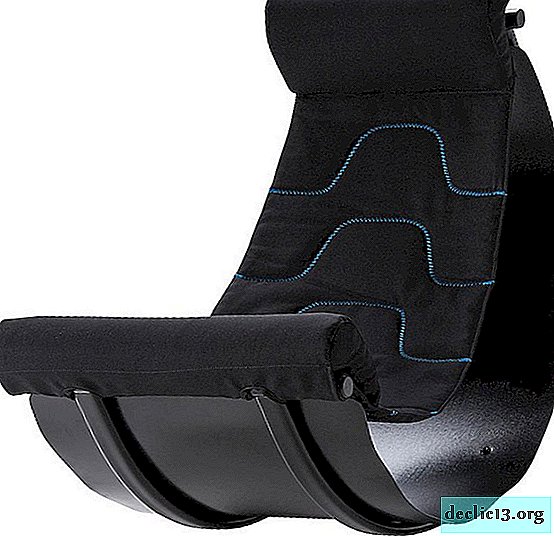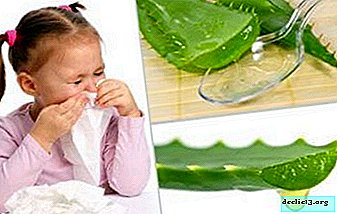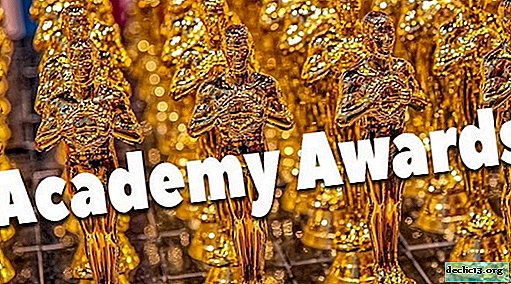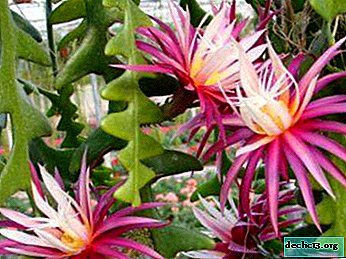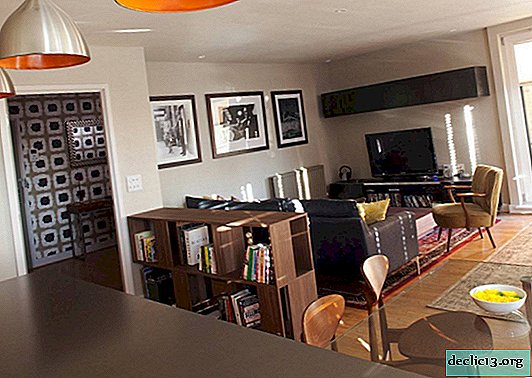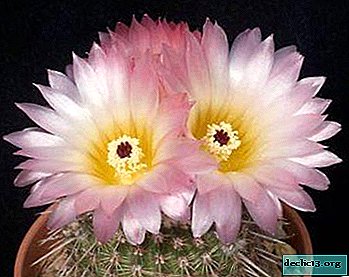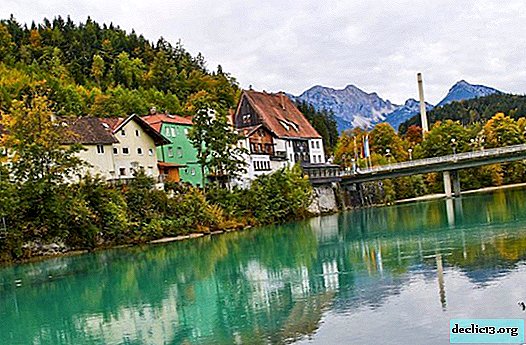Growing agave at home, subsequent care for it, as well as the features of flower propagation
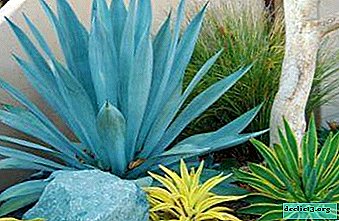
The list of popular houseplants, which are unpretentious when caring at home, includes agave - an amazing succulent, exported from the arid regions of Mexico and North America in the 16th century. This is a perennial plant with a lot of useful properties, it is decorated with winter gardens and greenhouses in the northern and temperate latitudes, and on the shores of the Black Sea and in the Mediterranean countries grown in open ground.
There are about 300 species of agave, their sizes range from a couple of centimeters to 5 meters. The most popular for growing at home (in a limited space) are small-sized plants with slow growth, for example, nitiferous, Funka, Tumi, Queen Victoria's agave. For greenhouses, American and Parrasian are preferable.
What season is most suitable for planting a plant?
Spring months are best suited for agave planting.. Agave needs fresh air and plenty of sunshine for fixing in the soil and intensive growth.
The soil from the flower shop is not suitable for the long existence of the plant, so immediately after the acquisition, you should deal with the issue of transplantation.Soil selection
 In the wild, agaves are accustomed to sandy and sandy-stony ground.. In the flower shop you can buy special soil for succulents (yucca, dracaena, palm trees), or prepare it yourself. To do this, you need to take:
In the wild, agaves are accustomed to sandy and sandy-stony ground.. In the flower shop you can buy special soil for succulents (yucca, dracaena, palm trees), or prepare it yourself. To do this, you need to take:
- 3 parts of clay-sod land;
- 1 part of sheet land;
- 1 part of river sand.
Experienced growers are advised to add lime, charcoal and bone meal to the sand, which are necessary for disinfecting the soil and increasing fertility.
How to grow at home?
Agave can be propagated in several ways.:
- seeds;
- rhizome cuttings;
- by the kids.
So, how to grow these plants in different ways?
From seed
Sowing
When growing from seeds, the percentage of germination of agaves is higher, despite the fact that the plants grow longer and the process itself is quite time-consuming. Flower shop shelves offer a large assortment of seeds, but mixtures of different types are best avoided, as they may require different growth conditions.
Usually agave seeds are black and flat. Most often, the size is proportional to the size of an already grown, mature plant. The smallest no more than 2 mm in diameter, the largest - more than a centimeter.
Sow should be in early spring into the soil to a depth of 0.5-1 cm. To make sure that there are no spores of fungus, weed seeds and pests in the substrate for planting, it must be calcined: hold for 20-30 minutes at a temperature of 60 degrees. After sifting.For sowing a large number of seeds of one species, a large shallow container is suitable. If desired, glass or plastic partitions can be placed inside it. The finished substrate is poured into pots or containers for planting, put on a tray with water and held until the soil absorbs moisture.
 Seeds before planting can be pre-soaked in a preventative (e.g., Fitosporin) or in a stimulant. This will help suppress possible bacterial and fungal diseases.
Seeds before planting can be pre-soaked in a preventative (e.g., Fitosporin) or in a stimulant. This will help suppress possible bacterial and fungal diseases.
Large seeds should be spread evenly on the surface, and small ones should be carefully poured out. Then they are sprayed from the spray bottle with warm filtered water and sprinkled with sand.
The sand should be medium in size: too large can burn small plants, and small - to cement the surface and make it difficult for seedlings to sprout.
Conditions
- The optimum temperature for germination of most seeds is 20 degrees at night and 25-30 in the afternoon. A night drop in temperature is beneficial, as it repeats the changes in natural conditions.
- For baby sprouts, the balance of heat and light is very important, otherwise they will not survive. From direct sunlight they need to be fenced off with a transparent grid. With a lack of natural lighting, organize artificial lighting, with a lack of heat - a micro-greenhouse. You can use batteries or build an automatic heating with a timer. The room needs to be ventilated more often, and the container (micro-greenhouse) should be opened at least twice a day. Supervision of the condition of plants is required.
- Humidity should be maintained moderate and controlled by the absence of mold and pests. Tiny midges can ruin all work if their appearance is missed and measures are not taken on time.
The first leaflet will appear in about 15-20 days, and this is probably the most favorite stage for gardeners. In two weeks, the leaves are stretched up to 8 centimeters in length, and the rosette begins to be created simultaneously with the appearance of the fourth sheet. 20 days after 4, a 5 leaf appears, and so the whole plant is gradually formed.
Transfer
Slow-growing agaves will need to be replanted after a year, fast-growing agaves in a few months.
It will be useful to mark all the pots by gluing on each decal: what is the name of this type of seed, their quantity, name of the supplier and all known information. This will help in the future not to mix plants: many agaves in the first year of growth are very similar to each other.After a year, the agave needs to be transplanted into the pot 3-4 cm more, and in subsequent years, the transplant is required every 2-3 years.
Leaf propagation
Propagating by leaf, agave grows faster and comes to flowering.:
 The largest green leaf without spots is carefully cut with a knife at the base.
The largest green leaf without spots is carefully cut with a knife at the base.- Dry for about 4-5 hours.
- Planted in prepared pots with poured soil.
Growing conditions:
- The temperature should be + 21-24 degrees.
- Watering to full rooting is moderate.
- It is not necessary to cover the pot.
Leaves begin to sprout in a few weeks.
Kids
When the children multiply, the new plant will develop a powerful root system, but the old plant will not be able to grow. When propagated by children in agave:
- Siblings formed at the base of the trunk are separated with a mandatory node on each branch.
- The cut pieces are sprinkled with charcoal powder and dried for 4-5 hours.
- Planted in moist soil.
Growing conditions:
- Grown at a temperature of + 20 in open ground.
- The first watering is organized in three days. It should be watered very carefully, in a thin stream, so as not to erode the soil mixture.
- Do not spray and do not cover with glass.
What to do if it does not take root?
Like any agave plant, it takes time to adapt to new soil and place. Sprouting takes several weeks. If after this period something is clearly wrong with the plant, then there may be several reasons:
- the roots and leaves of the plant were damaged during transplantation;
- the agave could freeze, it is affected by a lack of heat.
You can try watering the soil with a diluted spoon of honey (1 tbsp.spoon per 5 liters of water). Honey is a root stimulant. The plant needs to be inspected for rot and pests, to check if the roots are flooded, if necessary, to transplant.
Basic care rules
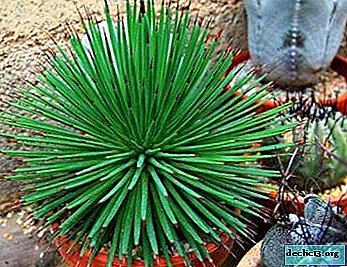 Temperature mode. Agave plant is thermophilic. Therefore, the room should be + 20-25 degrees in the summer, and in winter at least +10.
Temperature mode. Agave plant is thermophilic. Therefore, the room should be + 20-25 degrees in the summer, and in winter at least +10.In the hot summer months, it is advisable to take the agave out into the air (can be planted in a flower bed) or more often ventilate the apartment.
- Lighting. Agave likes to bathe in bright light, an adult plant is not afraid of direct rays, so on sunny days it can be safely placed on window sills or balconies. The window is best chosen south.
In winter, lighting should be provided additionally. With a lack of light, agave leaves become small, the plant stretches and loses its appeal. For illumination, you can use fluorescent lamps. Agave feels great in dry rooms with a humidity not exceeding 40%.
- The soil. Agave needs a water- and breathable substrate, loose, poor in nitrogen, but nutritious. You can buy ready-made soil for cacti or make a substrate yourself using sheet and clay-turf soil with sand and nutritious additives.
Good drainage is very important for agave, so a layer of expanded clay or broken red bricks should be placed on the bottom of the pot to prevent excess moisture. Layer thickness - 2-3 cm.
- Pot selection. Agave needs flat classic pots (with a 1: 1 ratio of diameter to height), wide but not too deep, with drainage holes at the bottom.
The size is selected with a margin of future growth of the root system.
- Top dressing. For the fastest possible growth of a plant, it is necessary to feed it during the growing season, from April to September once a month.
Mineral fertilizers for cacti or special mixtures for scullents are used for top dressing. They have a lot of phosphorus and potassium, and the percentage of nitrogen is small. You can add bone meal or superphosphate to the substrate. It is important to observe the proportions and not overfeed the plant, otherwise this will lead to dysplasia.
From October to March, the plant is at rest. You can’t feed them.
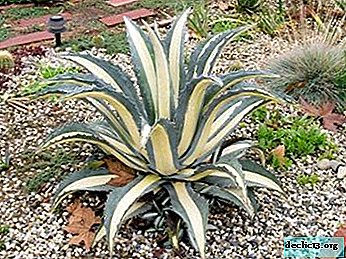 Watering. In summer, watering should be regular, but moderate, no more than 3 times a week. The soil should not be dry and not wet, but moist. In winter, watering depends on the temperature: agave is watered once a week if the temperature is up to 10 degrees and 2-3 times if it is higher.
Watering. In summer, watering should be regular, but moderate, no more than 3 times a week. The soil should not be dry and not wet, but moist. In winter, watering depends on the temperature: agave is watered once a week if the temperature is up to 10 degrees and 2-3 times if it is higher.Care must be taken here, since high humidity at low temperature causes the roots and stems to rot. Drying of an earthen coma and a bay should not be allowed. Water for irrigation should be filtered (settled) and warm. You can use melt or river water.
When watering, you can not get into the outlet and on the leaves. On sunny days, drops of water on the leaves can cause burns. It is safest to water in a pan. Agave does not need to be sprayed, but its leaves must be promptly cleaned of a layer of dust with a soft cloth, not forgetting to dry them later. Otherwise, the process of decay may begin.
Features
- In regions with mild winters, agave is often grown in open ground, but in areas with cold winters - in pots or containers. In autumn, when the temperature drops, they are brought into a cool, bright room for “wintering” and they are looked after there according to general rules.
- The growing area should be sandy or sandy, dry and with good drainage.
- Agave growing in open ground requires less water than growing in a container.
Diseases and Pests
- The leaves are dry. If a plant suffers from waterlogging, its leaves begin to dry and fall. Abundance of watering must be reduced.
- Why leaves turn yellow? In this case, it is most likely an excess of heat. The flower needs to be moved away from the heating source.
- Fungus. Often in agave, anthracnose, a fungus, is found. It is expressed in the form of tan spots, surrounded by a gray border, on the stems and leaves. The tissue in these places is covered with ulcers, and then dies. To get rid of the fungus, you should treat the plant with a special copper-based fungicidal preparation, carefully following the instructions:
- Fundazole.
- Fitosporin.
- Topsin.
- Shield. In case of agave damage with scabs with a cotton sponge moistened with a concentrated soap solution, thoroughly wipe all leaves and stem to eliminate coccid - an adhesive layer.It is better to cover the soil with a piece of plastic film. A small cloth is collected with a damp cloth. At the end, the flower is washed in the shower, and the next day it is treated with a special solution (Actellik). This procedure is repeated 2-3 times a month.
- Aphid. The following composition can destroy not only the scale insects, but also the aphids - another dangerous agave scourge.
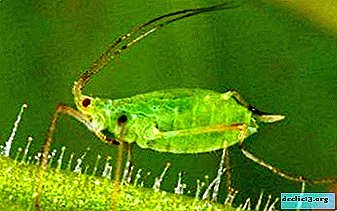 Pour 10 ml of alcohol and 15 ml of liquid soap into a liter of hot water, thoroughly beat and apply foam on the infected area. After 12 hours, rinse the plant in the shower and dry. Three procedures are enough for three weeks. With severe damage, you can try insecticides:
Pour 10 ml of alcohol and 15 ml of liquid soap into a liter of hot water, thoroughly beat and apply foam on the infected area. After 12 hours, rinse the plant in the shower and dry. Three procedures are enough for three weeks. With severe damage, you can try insecticides:- Permethrin.
- Metaphos.
- Intavir.
- Spider mite. This pest is highly fertile and survivable, so you must immediately use an acaricidal insecticide:
- Actellik.
- Fufanon.
- Apollo
Prevention of the development of diseases in agave is not so complicated:
- Carefully care for the plant, observing the general recommendations for watering and feeding;
- ventilate the room;
- drain stagnant water from the pan;
- Do not use old soil and drainage.
Conclusion
Agave fits well in any apartment: this unpretentious plant can please its owner for a long time in combination with other succulents or any other flowers. With its graceful appearance, it is perfect for decorating office compositions, greenhouse beds and conservatories. In gratitude for the care to give not only joy for the eyes, but also practical benefits.

 The largest green leaf without spots is carefully cut with a knife at the base.
The largest green leaf without spots is carefully cut with a knife at the base. Temperature mode. Agave plant is thermophilic. Therefore, the room should be + 20-25 degrees in the summer, and in winter at least +10.
Temperature mode. Agave plant is thermophilic. Therefore, the room should be + 20-25 degrees in the summer, and in winter at least +10. Watering. In summer, watering should be regular, but moderate, no more than 3 times a week. The soil should not be dry and not wet, but moist. In winter, watering depends on the temperature: agave is watered once a week if the temperature is up to 10 degrees and 2-3 times if it is higher.
Watering. In summer, watering should be regular, but moderate, no more than 3 times a week. The soil should not be dry and not wet, but moist. In winter, watering depends on the temperature: agave is watered once a week if the temperature is up to 10 degrees and 2-3 times if it is higher. Pour 10 ml of alcohol and 15 ml of liquid soap into a liter of hot water, thoroughly beat and apply foam on the infected area. After 12 hours, rinse the plant in the shower and dry. Three procedures are enough for three weeks. With severe damage, you can try insecticides:
Pour 10 ml of alcohol and 15 ml of liquid soap into a liter of hot water, thoroughly beat and apply foam on the infected area. After 12 hours, rinse the plant in the shower and dry. Three procedures are enough for three weeks. With severe damage, you can try insecticides:

